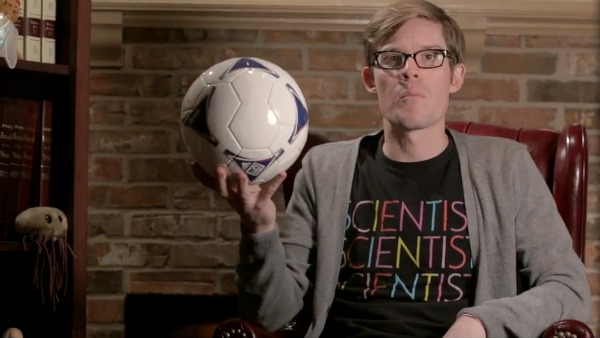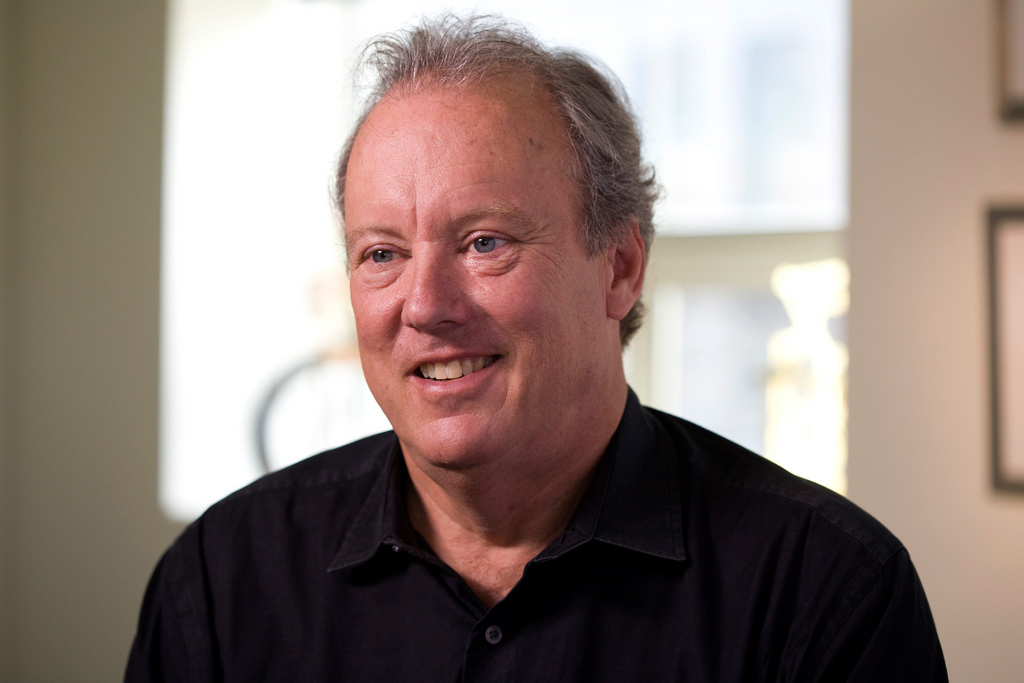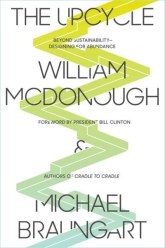In 2002, architect William McDonough and chemist Michael Braungart shook up the world of sustainability with their book Cradle to Cradle: Remaking the Way We Make Things. It proposed a radical rethinking, not just of human manufacturing, but of the way humans relate to the earth. Rather than simply reducing the harm we do, humans could become a source of health, a positive force in the world. The iconic example was a tree. A tree is not “efficient,” it is abundant, generative, sustaining its own growth while supporting the health of the ecosystem around it.
Humans, McDonough and Braungart suggested, could be like trees. Everything we create could be composed either of biological nutrients, would could be abandoned to biodegrade without harm, or technical nutrients, which could be reused again and again without loss of quality. The authors backed up their ideas with numerous well-known projects and a cradle-to-cradle certification process for products that matched their strict criteria.
Now the two have a new book, The Upcycle: Beyond Sustainability — Designing for Abundance, which applies the lessons learned in the ensuing decade to larger projects and systems. I called McDonough to chat with him about the ideas in the new book.
Q. What do you mean by “upcycle”?
A. We often talk about recycling, but we’re actually not. We are downcycling. Take a plastic water bottle. If we recycle it into a park bench, it’s actually downcycling, from a quality perspective. I’ve reused the molecules, so that’s recycling polymer. But I’ve reduced its qualities, because I mixed it with other things, hybridized it, let’s say, with other polymers and various dyes and finishes. The flower pot I made it into is going to a landfill, or potentially an incinerator. It’s downcycling, cascading down in quality, from cradle to grave, or cradle to crematorium.
Now, if I take something that’s problematic, like soft PVC, that contains plasticizers, alloys, endocrine disrupters, materials that are gassing and become dioxins that could cause cancer, and I recycle that — is that recycling good? No. Recycling’s a process; the product is good or not depending on human values. It’s sort of like efficiency. If I’m a terrorist, and I’m efficient, it’s worse. So if I’m recycling, that’s great, but if I’m recycling things that have become carcinogenic, is that great?
Upcycling is about increasing the quality as it goes to its next use. So, that water bottle. There is a residue in the bottle from a catalytic reaction involving very low levels of antimony, which is a heavy metal. Although it may not be dangerous when you drink water out of the bottle, it is something that’s suboptimal from a cradle-to-cradle perspective. If I burn the bottle as fuel, I get anti-trioxide in the atmosphere. Not a good thing. Why would I want a system of polyesters contaminated by heavy metal, when I’d like to use them forever, again and again, safely?
Upcycling means that we’d get that bottle back and take out the antimony. It gets better. That’s what we mean by upcycling: the idea that things get better when humans touch them. They move to their next use. The book is about taking things and imagining what’s next for them: Could they be used by many generations safely? And if not, what if we improved it every time we touched it?
Q. You say governments and businesses, people pondering projects, should put metrics second and begin instead with values. What do you mean by that?
A. Often the problem with environmental stuff is, if all you have are metrics and goals, then your goal is typically zero — zero emissions, zero waste, zero, zero, zero. What is the message of zero? It’s a message of desperation. “I’m bad, I’d like to be less bad. It’d be better if I wasn’t here.” That’s a very odd thing to say to a child: “It’s better if we were zero.” It’s not a great thing for ambition or inspiration. It’s not enough at this point in history.
Why don’t we tell each other what we do want to be? Let’s articulate a positive goal. What if we said we want to be 100 percent fabulous? That is a metric! The danger in the environmental world is people think that being less bad is good. But it isn’t. Being less bad is by definition bad.
Q. Your book is sort of impressionistic — this project and that project — but it made me wonder about whether these ideas can scale.
A. Great point. This is a book of evocation. It’s not formulations. It’s not saying, everybody do this. It’s more like, what if we thought this way? I know that might seem childish in some people’s eyes. “Wall Street will never let that happen, the oil companies are never going to go away.” Fine. We’ve heard all that.
But on the other hand, why not dream a little bit?
Q. Making cradle to cradle a reality would require a huge level of legal, political, and social changes. I know you don’t get involved in much advocacy …
A. We don’t use the words “should” and “must.” That’s for people who are in policy. We say “can” and “could.” Our job is to evoke visions of what might be possible. As Leibniz said, it’s possible, therefore it exists.
Q. What does it look like when you think in a cradle-to-cradle way about cities? Would it be possible to have a city of a million or more that could receive cradle-to-cradle certification?
A. I think it actually is, even if it’s awkward and difficult. It’s worth imagining: buildings like trees, cities like forests. We just did some sketching on a factory in India, where we’re going to grow food on the roof. You start designing like that for cities. What it would mean, if, say, Paris had greenhouse farms on roofs? How much food would it generate? How beautiful could it be? How many people would be working? And food miles would be vertical. It’s odd and strange thinking, but we have to put it out there now in order to start to imagining what might be possible.
Q. You say in the book that the next food revolution will come not from seeds, but from the soil. What do you mean by that?
A. Look at what’s going to happen with climate change and how our soils are being depleted and we’re losing topsoil and so on. What if we could do agriculture that was six times as intensive? That’s just what the Dutch are now doing with advanced greenhouse agriculture. The Netherlands — a country the size of Maryland — is the second largest agricultural export economy in the world, after the U.S. They have high-value exports — flowers, tomatoes, we’re not talking generic commodities. We should really look hard at the intensity of agriculture on smaller plots. You don’t need pesticides. You don’t need herbicides.
Then you think about the Africans, as their climate changes. Instead of saying, “we should give them genetically modified organisms that grow in drier places,” we should look at what it would mean if we create small, intensive gardening opportunities. They are much more productive, so they don’t have to scorch the earth and watch the soil blow away. What if we bring back the orchards and the bush crops and tree crops over 80 percent of the area, and then you intensely farm the rest?
That’s what the Dutch know how to do. They’re focused on the health of the soil and the bacteria. There’s the key. Make sure that’s thriving and everything flows from there.
We go the other way. Ours is all about amendments and inputs. Our Green Revolution, [Norman] Borlaug’s revolution, was quite astonishing. It allowed so many more people to have food, but it relied on external inputs. It imported things. Let’s remember that high-tech growing doesn’t have to be field growing. It can be concentrated on a rooftop.




